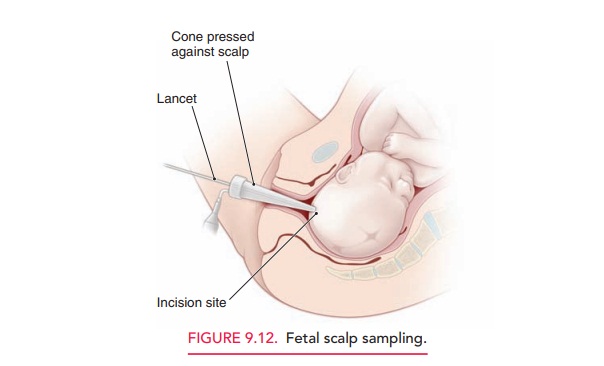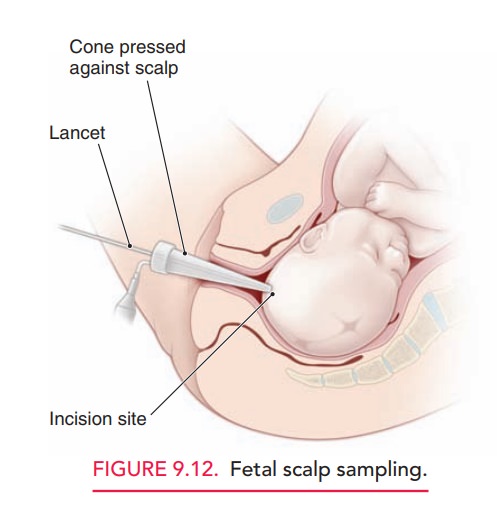Chapter: Obstetrics and Gynecology: Abnormal Labor and Intrapartum Fetal Surveillance
Ancillary Tests

Ancillary Tests
Because the rate of
false-positive diagnosis of EFM is high, attempts have been made to find
ancillary tests that help confirm a nonreassuring FHR tracing.
FETAL STIMULATION
In the case of an EFM tracing
with decreased or absent variability without spontaneous accelerations, an
effort should be made to elicit one. Four techniques are avail-able to
stimulate the fetus: 1) fetal scalp sampling,
Allis clamp scalp stimulation, 3)
vibro-acoustic stim-ulation, and 4) digital scalp stimulation. Each of thesetechniques involves accessing
the fetal scalp through the di-lated cervix. In vibroacoustic stimulation,
the fetal scalp isstimulated with a vibratory device, and in digital scalp
stimulation, the physician uses his or her finger to gently stroke the scalp.
Each of these tests is a reliable
method to exclude aci-dosis if accelerations are noted after stimulation.
Because vibroacoustic stimulation and scalp stimulation are less in-vasive than
the other two methods, they are the preferred methods. When there is an
acceleration following stimu-lation, acidosis is unlikely and labor can
continue.
DETERMINATION OF FETAL BLOOD PH OR LACTATE
When a nonreassuring FHR tracing
persists without spon-taneous or stimulated accelerations, a scalp blood sample
for the determination of pH or lactate can be considered (Fig. 9.12). However,
the use of scalp pH has decreased, and it may not be available at some tertiary
hospitals. Furthermore, the positive predictive value of a low scalp pH to
identify a newborn with HIE is only 3%.

PULSE OXIMETRY
The use of pulse oximetry has been suggested as a modality to reduce the false-positive diagnosis of a non-reassuring FHR.
However, research has demonstrated that neither the overall rate of
cesarean delivery nor the rate of umbilical arterial pH less than 7 decreased
when pulse oximetry was used in association with EFM in cases of nonreassuring
fetal status. Because of the uncertain ben-efit of pulse oximetry and concerns
about falsely reassuring fetal oxygenation, use of the fetal pulse oximeter in
clinical practice cannot be supported at this time. Additional stud-ies to test
the efficacy and safety of fetal pulse oximetry are underway.
Related Topics